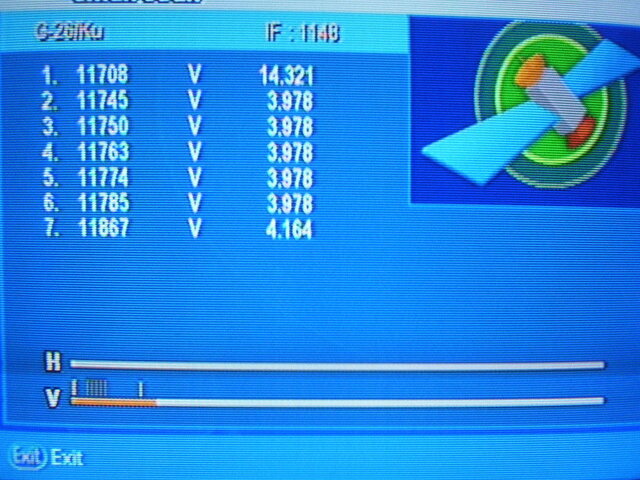Just some C&P from WikiPedia regarding L-Band (and others) for fun and interesting reading.
IEEE L band
The IEEE L band (20-cm radar long-band) is a portion of the microwave band of the electromagnetic spectrum ranging roughly from 1 to 2 GHz.[1][2] It is used by some communications satellites, and for some terrestrial Eureka 147 digital audio broadcasting (DAB). The amateur radio service also has an allocation between 1240 and 1300 MHz (23-centimeter band).
The L band refers to the frequency range of 950 MHz to 1450 MHz. It is the result of the downconversion of the received downlink satellite signals (C, Ku or Ka) by the LNB (Low-noise block converter).
GNSS
The Global Positioning System carriers are in the L band, centered at 1176.45 MHz (L5), 1227.60 MHz (L2), 1381.05 MHz (L3), and 1575.42 MHz (L1) frequencies.
The Galileo Navigation System uses the L-band similarly to GPS.
The GLONASS System uses the L-band similarly to GPS.
Physics issues relating to band use
The band also contains the hyperfine transition of neutral hydrogen (the hydrogen line, 1420 MHz), which is of great astronomical interest as a means of imaging the normally invisible neutral atomic hydrogen in interstellar space. Consequently parts of the L-band are protected radio astronomy allocations world-wide.
L band 1 to 2 GHz
S band 2 to 4 GHz
C band 4 to 8 GHz
X band 8 to 12 GHz
Ku band 12 to 18 GHz
K band 18 to 26.5 GHz
Ka band 26.5 to 40 GHz
Q band 30 to 50 GHz
U band 40 to 60 GHz
V band 50 to 75 GHz
E band 60 to 90 GHz
W band 75 to 110 GHz
F band 90 to 140 GHz
D band 110 to 170 GHz
Radio Spectrum:
subHertz
subHz 0 < 3 Hz
> 100,000 km
Natural and man-made electromagnetic waves (millihertz, microhertz, nanohertz) from earth, ionosphere, sun, planets, etc[citation needed]
Extremely low frequency
ELF 1 3–30 Hz
100,000 km – 10,000 km Communication with submarines
Super low frequency
SLF 2 30–300 Hz
10,000 km – 1000 km Communication with submarines
Ultra low frequency
ULF 3 300–3000 Hz
1000 km – 100 km Communication within mines
Very low frequency
VLF 4 3–30 kHz
100 km – 10 km Submarine communication, avalanche beacons, wireless heart rate monitors, geophysics
Low frequency
LF 5 30–300 kHz
10 km – 1 km Navigation, time signals, AM longwave broadcasting, RFID
Medium frequency
MF 6 300–3000 kHz
1 km – 100 m
AM (medium-wave) broadcasts
High frequency
HF 7 3–30 MHz
100 m – 10 m Shortwave broadcasts, amateur radio and over-the-horizon aviation communications, RFID
Very high frequency
VHF 8 30–300 MHz
10 m – 1 m FM, television broadcasts and line-of-sight ground-to-aircraft and aircraft-to-aircraft communications. Land Mobile and Maritime Mobile communications
Ultra high frequency
UHF 9 300–3000 MHz
1 m – 100 mm
Television broadcasts, microwave ovens, mobile phones, wireless LAN, Bluetooth, GPS and two-way radios such as Land Mobile, FRS and GMRS radios
Super high frequency
SHF 10 3–30 GHz
100 mm – 10 mm Microwave devices, wireless LAN, most modern radars
Extremely high frequency
EHF 11 30–300 GHz
10 mm – 1 mm Radio astronomy, high-frequency microwave radio relay
Terahertz
THz 12 300–3,000 GHz
1 mm – 100 ?m Terahertz imaging – a potential replacement for X-rays in some medical applications, ultrafast molecular dynamics, condensed-matter physics, terahertz time-domain spectroscopy, terahertz computing/communications
RADAR:
Radar - Wikipedia, the free encyclopedia@@AMEPARAM@@/wiki/File:Radar_antenna.jpg" class="image"><img alt="" src="http://upload.wikimedia.org/wikipedia/commons/thumb/9/90/Radar_antenna.jpg/220px-Radar_antenna.jpg"@@AMEPARAM@@commons/thumb/9/90/Radar_antenna.jpg/220px-Radar_antenna.jpg


